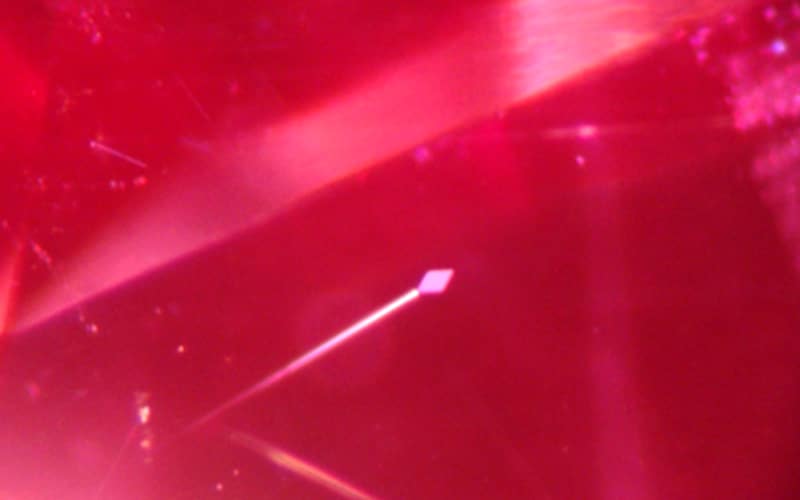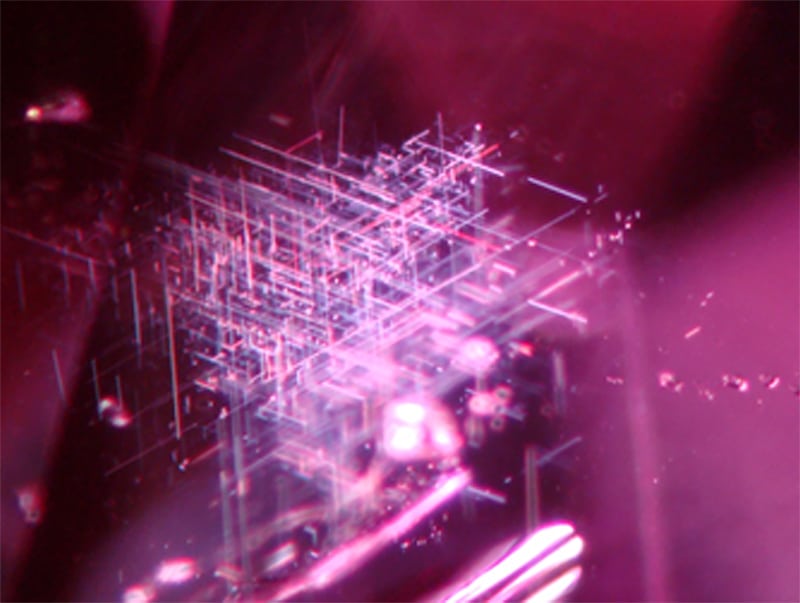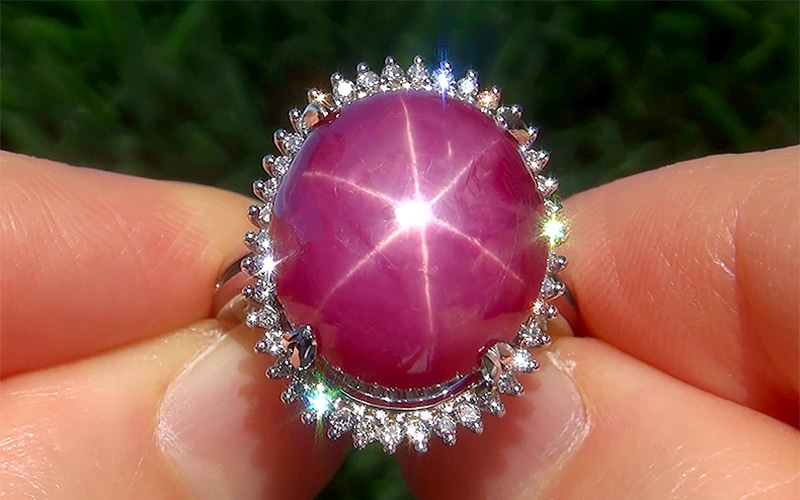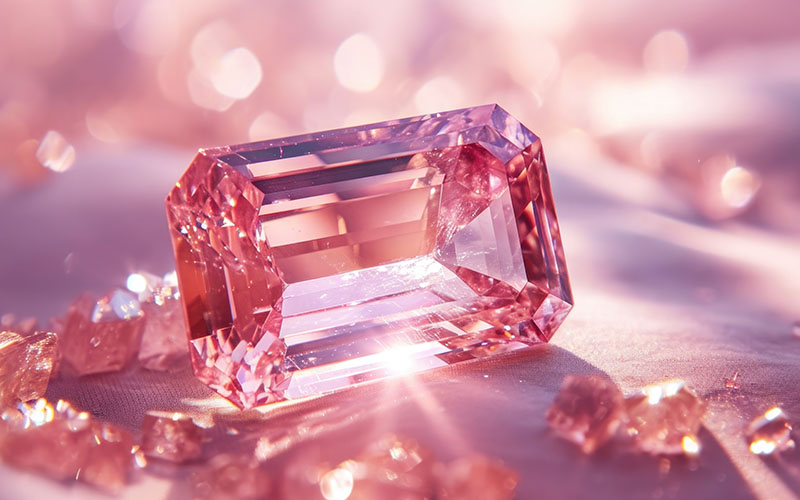By Dr. Nikhil Alfred, IGI Gemologist
An exciting discovery was made by Gemologists examining a beautiful red ruby under the microscope when they came across an entire quiver of Cupid’s arrows.

This was ironic, indeed, as red is often considered as the color of romance and this red ruby would quite possibly find its way onto a ring for some beautiful wife’s anniversary gift… Hopefully!
To him who seeks, nature rewards.
These arrows and needles are actually nature’s way of telling the entire story of a Ruby’s past. Only observable under a microscope, they don’t simply give a keen observer hints as to the country of origin, they can also indicate when the ruby has undergone certain treatments.
This particular ruby was untreated and shown to be a Burmese ruby; Highly prized, very rare and much sought-after for its deep red coloration.

The science behind it all: A silky affair of ruby and sapphire
The needles pictured here are characteristic inclusions within ruby and sapphire gemstones. Spectrographic analysis has shown them to be composed of rutile. These rutile inclusions form at the same time as the surrounding corundum and the intersecting needles are called “silk.”
Silk consists of minute crystals formed by a process known as exsolution, in which an initially homogeneous solid solution separates into at least two different crystalline minerals without the addition or removal of any materials. It usually occurs during cooling, which is when the exsolved “silk” inclusions arrange themselves in their crystallographic orientation.

In the image above we see three sets of rutile needles aligned in the basal plane, intersecting at angles of 60°, 120° and perpendicular to the c-axis. In addition to the rutile needles we see exsolved particles and plate-like inclusions.
Natural corundum consists of rutile silk which, at high magnification, often shows minute dart or arrow shaped twins with small reentrant angles at the broad end. These needles are generally flattened, thus extremely thin in cross-section. At high magnification we also observe that well-formed rutile silk generally has tiny daughter crystals growing at the wide ends.
Using a fiber optic light source in microscopy is helpful for viewing them in great detail.

High-temperature heat treatment
Rutile needles become partially dissolved when the ruby or sapphire undergoes high-temperature heat treatment, circa 1600-1900° C. Such high temperatures will cause the needles to dissolve into tiny droplets, arranged in a pattern similar to the one which existed before heating. So the presence of rutile needles – specifically sharp dart & arrow shaped rutile in corundum – is a good indication that the gemstone has not been subjected to high-temperature heat treatment.
Low-temperature heat treatment
It is important to note, however, that rubies and sapphires can also be treated using lower temperatures (800-1300° C) whereupon rutile needles remain intact. Such low-temperature heat treatments are commonly used with rubies and sapphires to remove blue color zones or reduce/remove a purplish color component. In this way a purple sapphire can be made into a pink sapphire. Relatively low temperature heating is very effective at breaking the iron-titanium IVCT (intervalence charge transfer) which produces a blue color. Additionally, a sapphire can be made colorless with relatively low temperature heating and a yellow sapphire can be made more intense. It’s even possible to transform a pink sapphire into a Padparadscha or Orange Sapphire, if the prerequisite chemistry is present.

A Star is born
Like Bradley Cooper in the Hollywood blockbuster, the rutile flakes are also instrumental in creating “stars” in their own right. These structurally oriented “silk” needles with exsolved particles give rise to the optical phenomenon called asterism in star rubies and star sapphires. However, unlike their counterparts on the big screen these stars will never grow old.
So the next time you’re looking at a ruby at a store, or on your own finger, do give a thought to the fascinating world of inclusions that may lie inside.
Maybe you, too, will get struck by one of cupid’s arrows.

Dr. Nikhil Alfred is a geologist with more than 15 years of experience in research studies involving diamonds and colored gemstones. He is a member of the research department at the International Gemological Institute, Mumbai, India.




